Heart wall structure
The heart staple consists of three layers: the outer layer - the epicardium, the middle - the myocardium and the inner - the endocardium. Outer shell of the heart. Epicardium, epicardium, is a smooth, thin and transparent shell. It is a visceral plate, lamina visceralis, pericardium, pericardium. The connective tissue base of the epicardium in various parts of the heart, especially in the furrows and in the apical region, includes adipose tissue. With the help of connective tissue, the epicardium is fused with the myocardium most densely in places of the least accumulation or absence of adipose tissue (see "Pericardium").

Muscle shell of the heart, or myocardium. The middle, muscular, shell heart, myocardium, or heart muscle, is a thick and significant part of the wall of the heart. The maximum thickness of the myocardium reaches in the region of the wall of the left ventricle (11-14 mm), twice the thickness of the wall of the right ventricle (4-6 mm). In the walls of the atrium, the myocardium is much less developed and its thickness is only 2 - 3 mm.

Between the muscular layer of the atria and the muscular layer of the ventricles is a dense fibrous tissue, through which fibrous rings are formed, right and left, anuli fibrosi, dexter and sinister. Co the sides of the external surface of the heart their arrangement corresponds to the coronal sulcus.
The right fibrous ring, anulus fibrosus dexter, which surrounds the right atrioventricular opening, has the shape of an oval. The left fibrous ring, anulus fibrosus sinister, surrounds the left atrioventricular aperture on the right, left and posterior and in the shape of a horseshoe-shaped one.
With its front sections, the left fibrous ring is attached to the root of the aorta, forming around its posterior periphery triangular connective tissue plates - the right and left fibrotic triangles, trigonum fibrosum dextrum et trigopis fibrosum sinistrum.

The right and left fibrous rings are connected to each other in a common plate, which completely, except for a small area, isolates the muscles of the atria from the muscles of the ventricles. In the middle of the connecting ring of the fibrous plate there is an opening through which the musculature of the atria is connected to the musculature of the ventricles by means of the atrioventricular bundle.
In the circumference of the aortic and pulmonary trunk apertures, there are also interconnected fibrous rings; Aortic ring is connected with fibrous rings of the atrioventricular apertures.
The muscular membrane of the atria. In the walls of the atrium, two muscle layers are distinguished: superficial and deep.
The surface layer is common to both atria and is a muscle bundle that extends predominantly in the transverse direction. They are more pronounced on the anterior surface of the auricles, forming here a relatively wide muscular layer in the form of a horizontally located interlobar fascicle, passing to the inner surface of both ears.
On the posterior surface of the atria, the muscle beams of the superficial layer are interlaced partially into the posterior parts of the septum. On the posterior surface of the heart, between the bundles of the superficial muscle layer, there is an epicardial depression, bounded by the inferior vena cava, the projection of the interatrial septum, and the venous sinus mouth. On this site, the nerve part of the atrium septum includes the innervation of the atrial septum and the ventricular septum, the atrioventricular bundle.

The deep layer of muscles of the right and left auricles is not common for both atria. It distinguishes circular and vertical muscle beams.
Circular muscle bundles lie in large numbers in the right atrium. They are located mainly around the holes of the hollow veins, passing to their walls, around the coronary sinus of the heart, at the mouth of the right ear and at the margin of the oval fossa: in the left atrium they lie mainly around the holes of the four pulmonary veins and at the beginning of the left ear.
Vertical muscle bundles are located perpendicular to the fibrous rings of the atrioventricular orifices, attaching them to their ends. Some of the vertical muscle bundles enter the thickness of the valves of the atrioventricular valves.
Cretaceous muscles, mm. Pectinati. Also formed by beams of a deep layer. They are most developed on the inner surface of the anterior right wall of the right atrium cavity, as well as the right and left ears; In the left atrium they are less expressed. In the intervals between the comb muscles, the wall of the atria and the ears is particularly thinned.
On the inner surface of both ears there are short and thin bundles, the so-called fleshy trabeculae, trabeculae carneae. Crossing in different directions, they form a very thin loop-like network.

Ventricular musculoskeletal. In the muscle shell (myocardium) three muscle layers are distinguished: outer, middle and deep. The outer and deep layers, moving from one ventricle to another, are common in both ventricles; The middle, although connected with the other two layers, surrounds each ventricle separately.
The outer, relatively thin layer consists of oblique, partly rounded, partly flattened bundles. Bunches of the outer layer begin at the base of the heart from the fibrous rings of both ventricles and partly from the roots of the pulmonary trunk and the aorta. On the sternocostal (anterior) surface of the heart, outer bundles go from right to left, and on the diaphragm (bottom) - from left to right. At the top of the left ventricle, these and other bundles of the outer layer form the so-called curl of the heart, vortex cordis, and penetrate into the depth of the heart walls, passing into the deep muscle layer.
A deep layer consists of bundles rising from the apex of the heart to its base. They have a cylindrical shape, and a part of the bunches are oval in shape, repeatedly split and reconnect, forming a different loop size. The shorter of these beams do not reach the base of the heart, are sent obliquely from one wall of the heart to the other in the form of fleshy trabeculae. Only the interventricular septum immediately under the arterial apertures is deprived of these crossbeams.
A number of such short but more powerful muscle bundles, connected in part with both the middle and outer layer, protrude freely into the ventricular cavity, forming cone-shaped papillary muscles of various sizes.

The papillary muscles with tendon chords retain the valve flaps when they are slammed with a blood stream directed from the contracted ventricles (with systole) to the relaxed atrium (with diastole). Meeting the obstructions from the valves, the blood rushes not into the atrium, but into the aortic and pulmonary trunk apertures, the semilunar flaps of which are pressed against the walls of these vessels by the current of the blood and thereby leave the lumen of the vessels open.
Located between the outer and deep muscle layers, the middle layer forms a series of well-defined circular beams in the walls of each ventricle. The middle layer is more developed in the left ventricle, so the walls of the left ventricle are much thicker than the walls of the right ventricle. The bunches of the middle right ventricular muscle layer are flattened and have an almost transverse and somewhat oblique direction from the base of the heart to the apex.

The interventricular septum, septum interventriculare, is formed by all three muscle layers of both ventricles, but more muscle layers of the left ventricle. The thickness of the septum reaches 10-11 mm, somewhat inferior to the thickness of the wall of the left ventricle. The interventricular septum is convex toward the cavity of the right ventricle and for 4/5 represents a well developed muscular layer. This much larger part of the interventricular septum is called the muscular part, pars muscularis.
The upper (1/5) part of the interventricular septum is the membranous part, pars membranacea. The membrane of the right atrioventricular valve is attached to the membranous part.

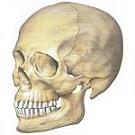
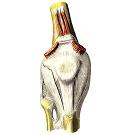
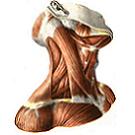
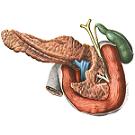
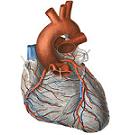

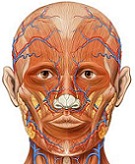

Comments
When commenting on, remember that the content and tone of your message can hurt the feelings of real people, show respect and tolerance to your interlocutors even if you do not share their opinion, your behavior in the conditions of freedom of expression and anonymity provided by the Internet, changes Not only virtual, but also the real world. All comments are hidden from the index, spam is controlled.